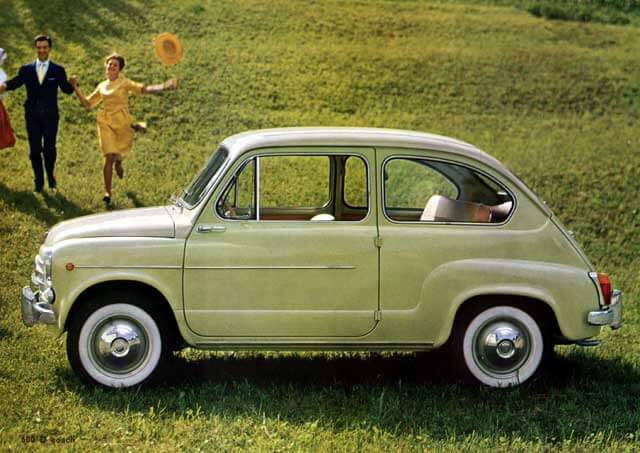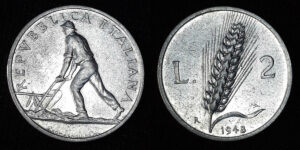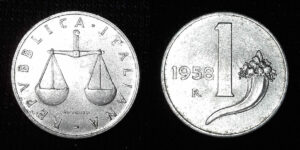From Lira to Euro. Italy’s History in Coins – Part 8: The Mezzogiorno
Over the course of the next 2000 years, constantly changing foreign rulers exploited the southern territories. Those who lived off agriculture were unable to free themselves from the grip of the latifundia system. Large estates developed in Italy in the 2nd century BC, which were first farmed by slaves, then by peasants – peasants who had originally been independent but increasingly depended on the big landowners. In the Middle Ages, new systems, the successors of the latifundia, emerged: by then, pieces of land were given to tenants while the landowners lived in the cities. In such a world, it was impossible for independent cities to develop.
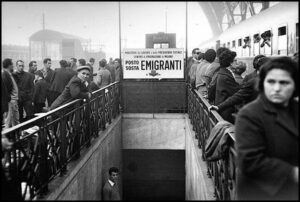
Numerous people travelled from the south to the north to find jobs. And their cheap labour was more than welcome.
Italy’s Poorhouse: the “Mezzogiorno”
Industrialisation barely spread to South Italy, and agriculture produced lower yields than in the north. After the Second World War (1939-1945), it became clear that the so-called Mezzogiorno – a term derived from “noon, south” – displayed all symptoms of economic underdevelopment: hundreds of thousands of Italians living there dwelled in extremely primitive conditions, many were undernourished, and there was a lack of basic hygienic facilities. Unemployment was as high as 50 percent. Thus, most South Italian workers only had one option: to leave their homes and to work for mostly lousy salaries in the north or neighbouring countries.
The backwardness of the south was one of the aspects that contributed to the upswing of the north. It was the cheap “guest workers” from the Mezzogiorno who made the Italian economic miracle of the 1950s possible – which exclusively took place in the north. In the south, on the other hand, the communists stirred up uprisings. The government in Rome was forced to initiate an agrarian reform – they expropriated big landowners and the land was redistributed between about 100,000 families. In this way, Rome tried to sooth rebellious peasants and day labourers while creating a small group of landowners, who would henceforth be immune against the propaganda of the communists.
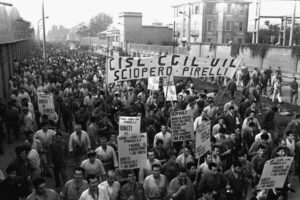
Strikes, which were fuelled by the communists, repeatedly took place in the south, and in northern factories. The government tried to defuse this explosive mixture by means of an agrarian reform.
The agrarian reform was nothing but a drop in the bucket: only a tiny minority of the about six million peasants benefited from it. Thus, the south lost a major part of its most skilled workers over the course of the next years as they migrated north. And yet, Italy became one of the first seven industrialised countries of the world in the following years: in the mid-60s, the transition from an agricultural country to an industrialised state was completed. And at the beginning of the 1970s, the Italian people was about to become an affluent society. Although the problems in the south had not been solved, many southern families were almost as wealthy as people in the north because workers transferred money to them.
Italy’s Money from the End of the War to the Economic Boom
The first coins of the Italian Republic of 1, 2, 5 and 10 lire were issued in the December of 1946. Their images express a desire for peace and for going back to traditional rural values – for example by means of an olive branch, an ear, or a dove.
A second coin series was put into circulation starting from 1951. These issues reflected the increased devaluation of the currency – there were also pieces of 20, 50, 100 and 500 lire while the production of 1 and 2 lire pieces was stopped in 1959. The coin in the picture was part of this second Republican series. The images symbolised the awakening of a new, optimistic age, economic upswing and increased industrialisation. The 1 lira piece depicts a cornucopia – symbolising abundance – and on the obverse a pair of scales, the classic symbol of justice.
The 500 lire coin features a beautiful woman’s head on the obverse surrounded by the coats of arms of all Italian regions. On the reverse, the caravels of explorer Christopher Columbus (*1451, †1506) represent the departure into a new age. The 500 lire coins are – for the first time in a long period – made of silver. However, the production of these pieces had to be stopped as early as in 1967: the silver price began to rise in the 1960s which made it unprofitable to mint silver coins.
In the next and last part of this series, we will witness how Silvio Berlusconi and his party Forza Italia came to power and how the government decided on the design on Italian euro and cent coins.
Here you can find all parts of the series “From Lira to Euro. Italy’s History in Coins”.




